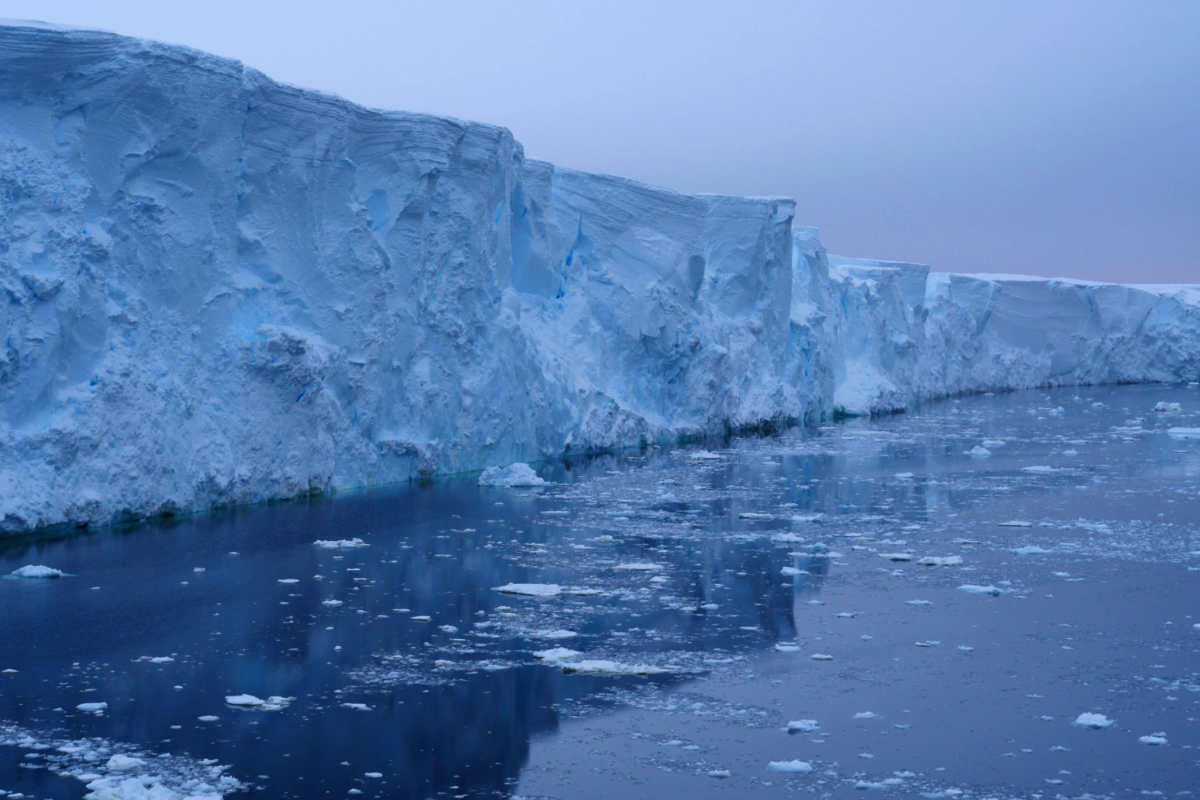
The ice shelf that is holding the glacier in place for the time being turns out to be sighing and cracking from all sides.
Scientists have been very concerned about the melting Thwaites Glacier for some time; a glacier with an area of more than 192,000 kilometers located in West Antarctica. The glacier is rapidly retreating and is already responsible for about 4 percent of global sea level rise. And that while Thwaites is currently still somewhat held back by an ice shelf. However, a new study comes with worrying news. Because it now appears that this crucial ice shelf that is still holding the glacier in place is also groaning and cracking from all sides.
The Thwaites Glacier, as mentioned, is located in West Antarctica and is currently responsible for about 4 percent of global sea level rise. If the glacier were to melt in its entirety, it could raise sea levels by 65 centimeters, causing extreme flooding to millions of people living along the coast. Researchers are closely monitoring the glacier. Not only because of the sea level rise that it could realize on its own, but also because the enormous glacier is currently slowing down surrounding glaciers. If Thwaites disappears, those glaciers – together good for a sea level rise of 2.4 meters if they disappear in their entirety – will lose ice more quickly.
The question is how long the ice shelf can last. Because recent research has now shown that the ice shelf is in particularly severe weather. This is partly because warm ocean water affects the underside of the ice shelf. At the same time, huge, growing fractures are forming on the plate. “If the current pace continues, this critical ice shelf will disintegrate within the next two decades,” said study researcher Peter Davis.
Grounding line
The researchers studied the glacier and the ice shelf using remote-controlled underwater robots that lowered them through boreholes. In this way they were able to take measurements in the underlying ocean and the so-called ‘grounding line’ to investigate; the point at which glacial ice is no longer attached to the underlying bed, but begins to float. Or in other words: the starting point of the ice shelf. The grounding line however, it is receding further and further, causing more ice to be lost. The researchers describe the grounding line at the moment even as ‘chaotic’. “Warm water, rough ice and a steep, sloping bottom cause the ice shelf to melt from below,” said study researcher Peter Washam.
Tides
How does that hot water get there? The researchers found that warm water is pumped under the ice shelf by the tides. The floating part of the glacier rises and falls with the tides. That movement actually acts as a kind of lever and pumps water under the ice.
Cracks
But not only that. “We see crevices forming on the floating ice shelf, through which water can flow,” said study researcher Lizzy Clyne. “This could affect the long-term stability of the ice shelf.”
Overall, the research only heightens concerns about Antarctica’s most dangerous glacier. The future does not look very rosy. Researchers will continue to closely monitor developments on and under the glacier. “If Thwaites collapses, most of the ice on West Antarctica will be carried away,” researcher Ted Scambos predicts. “So it’s critical to get a clearer picture of how the glacier will behave over the next 100 years.”
Source material:
“The threat from Thwaites: the retreat of Antarctica’s riskiest glacier” – British Antarctic Survey
Image at the top of this article: Rob Larter, BAS